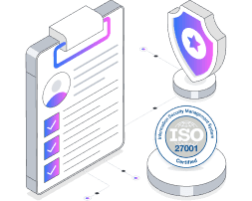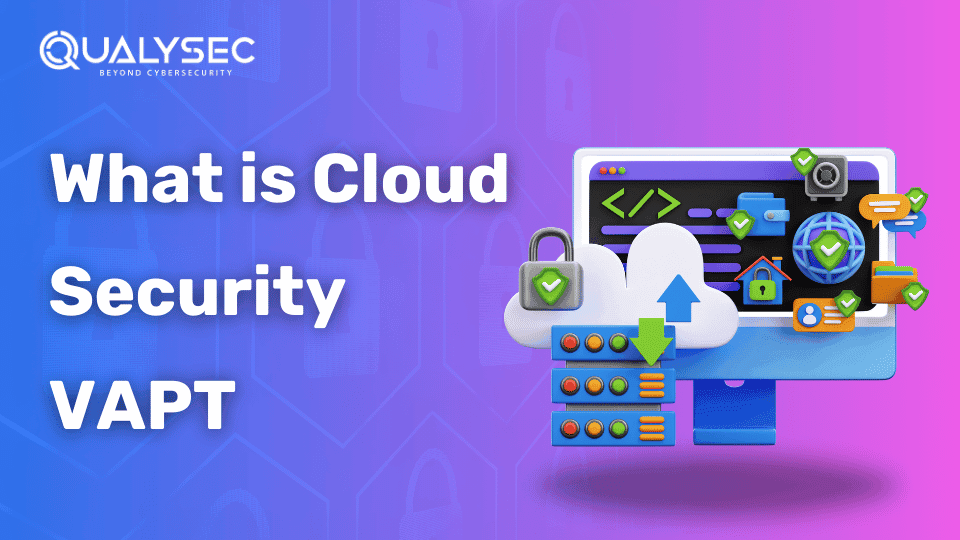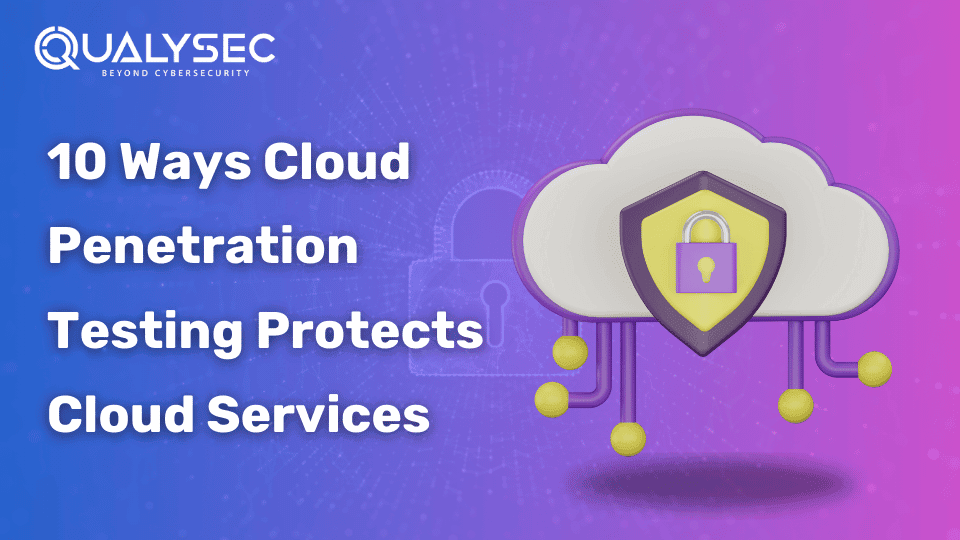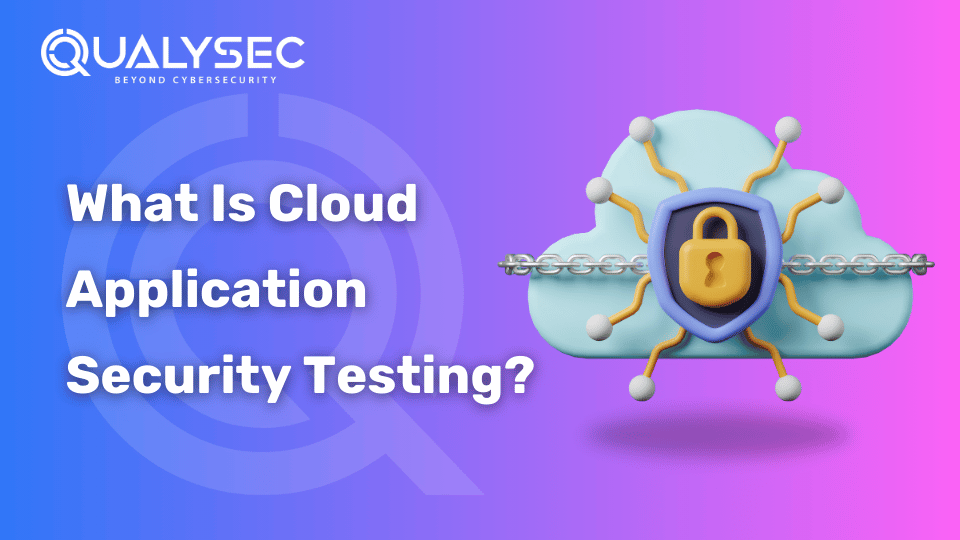What is Cloud Security VAPT?
Cloud computing has become a critical part of businesses nowadays for the agility, scalability, and cost-effective services they provide. However, with the increase in usage of cloud applications, the security challenges have also increased. To tackle these challenges, organizations are implementing offensive methods such as cloud security VAPT (Vulnerability Assessment and Penetration Testing). As per a recent survey, over 80% of companies globally have experienced at least one cloud incident in the past year, with 27% of organizations experiencing a public cloud security incident. Another study shows that servers are the main target of 90% of data breaches where cloud-application servers are most affected. With sensitive data and vital applications being stored in the cloud, robust security is inevitable for their protection. In this blog, we will discuss cloud VAPT, how it helps safeguard cloud assets, and why more organizations should invest in it. What is Vulnerability Assessment and Penetration Testing (VAPT) Vulnerability Assessment and Penetration Testing (VAPT) is a structured way to evaluate the security of an organization’s IT infrastructure, including cloud-based systems and applications. Let’s look at each of these components in detail. Vulnerability Assessment Vulnerability assessment involves identifying and assessing vulnerabilities within a system or network to detect potential weaknesses that could be exploited by hackers. These vulnerabilities might include outdated software, misconfigurations, weak access controls, or unresolved vulnerabilities. This process uses a range of automated tools and manual inspections to identify these weaknesses. Penetration Testing Also known as pentesting or ethical hacking, penetration testing involves simulating real-world attacks to identify vulnerabilities and evaluate the effectiveness of security measures. Penetration testers use various techniques to exploit weaknesses, gain unauthorized access, and offer insights into the system’s ability to prevent cyberattacks. What is the Purpose of Cloud VAPT? The prime purpose of cloud security VAPT is to find security gaps in the loud service before hackers do. Different types of automation and manual techniques are used depending on the type of cloud service and provider to find vulnerabilities. However, since a customer does not own the cloud platform/infrastructure as a product but as a service, there are several challenges to cloud VAPT, which we will read about later in this blog. Benefits of Continuous Cloud Security VAPT Cloud security VAPT services are not only beneficial for cloud providers but also for organizations that store their applications and sensitive data in the cloud. Security testing in the cloud also helps in maintaining the shared responsibility model created by most cloud providers between themselves and the customers. 1. Tackle Evolving Threats The landscape of cyber threats is constantly evolving, with new attack methods and advanced techniques emerging regularly. Depending on a one-time security assessment is no longer enough to protect cloud environments. Continuous cloud security testing ensures continuous monitoring of security vulnerabilities and provides proactive measures to address risks in this rapidly changing threat landscape. 2. Timely Threat Detection and Response Cloud environments are dynamic, where frequent changes occur in software updates, configurations, and deployment of new applications. These changes can create new vulnerabilities and unintentionally weaken existing security measures. Regular cloud security VAPT helps organizations identify vulnerabilities in real-time, allowing for quick remediation before they are exploited by attackers. 3. Meet Compliance Requirements Many industries and regulatory standards make it mandatory for regular security assessments and penetration testing to ensure compliance. Continuous cloud security vulnerability and penetration testing help organizations fulfill these requirements and provide proof of their dedication to maintaining a robust security posture. Failing to comply with these regulations can lead to significant financial penalties and reputation damage. 4. Prevent Third-Party Risks Organizations operating in cloud environments frequently use various third-party elements such as APIs, frameworks, and libraries. These external dependencies can create vulnerabilities that are not under the direct control of the organization. Continuous cloud security VAPT helps identify vulnerabilities emerging from these third-party integrations and allows organizations to collaborate with vendors to address them. Qualysec Technologies provides high-quality and customized cloud VAPT solutions for those who want their assets in a cloud safe. Contact us today and we will guide you through the entire process of strengthening your security. Talk to our Cybersecurity Expert to discuss your specific needs and how we can help your business. Schedule a Call Cloud VAPT Methodology There are different types of cloud VAPT methodologies to ensure its authenticity. These methodologies cover all critical aspects within the cloud platform and applications. 1. OSSTMM OSSTMM stands for Open-Source Security Testing Methodology Manua, a renowned and recognized standard of penetration testing. It is based on a scientific approach to VAPT that offers flexible guidelines for testers, making it a widely adopted framework. Testers can use OSSTMM to perform accurate assessments. 2. OWASP Open Web Application Security Project or OWASP is a widely known penetration testing standard that is continuously developed and updated by a community by keeping in trend with the latest cyber threats. Apart from identifying application vulnerabilities, OWASP also addresses logic errors in processes. 3. PTES Penetration Testing Execution Standards (PTES) is a pen testing methodology crafted by a team of IT professionals. PTES aims to create a comprehensive and updated standard of penetration testing across various digital assets, including cloud environments. Additionally, it wants to create awareness among businesses and what to expect from a penetration test. Top Common Cloud Vulnerabilities With the increase in usage of cloud platforms, the risks are also increasing. Here are some common cloud vulnerabilities or security risks that need regular cloud security VAPT to mitigate. 1. Insecure APIs Application Programming Interfaces (APIs) are used in cloud services to exchange information across different applications. However, insecure APIs can lead to extensive data breaches. Sometimes, misusing HTTP methods like PUT, POST, and DELETE in APIs can allow hackers to upload malware onto servers and delete crucial data. Insufficient access control and inadequate input sanitization are also prime causes of API being compromised, which can be detected through cloud security testing. 2. Server Misconfigurations One of the most common cloud vulnerabilities is cloud service misconfigurations, particularly the misconfigured S3 Buckets. Other common cloud misconfigurations include improper permissions, failure to encrypt data, and unclear differentiation between private and public data. 3. Weak Passwords/Credentials Using weak or common passwords can put your cloud accounts at risk of brute-force attacks. Attackers






